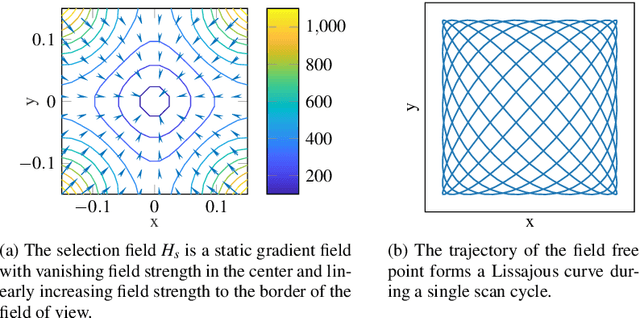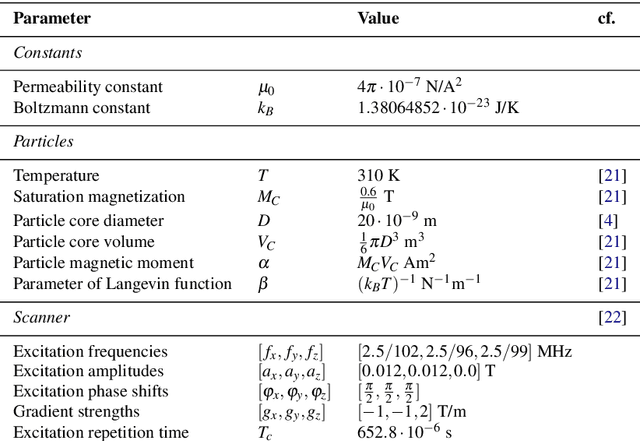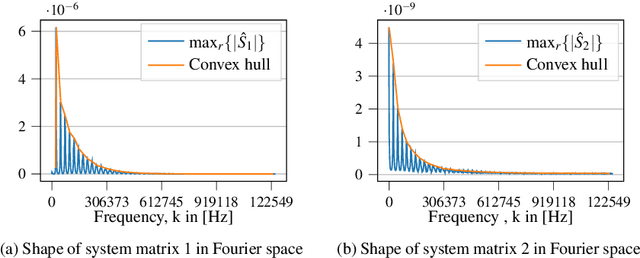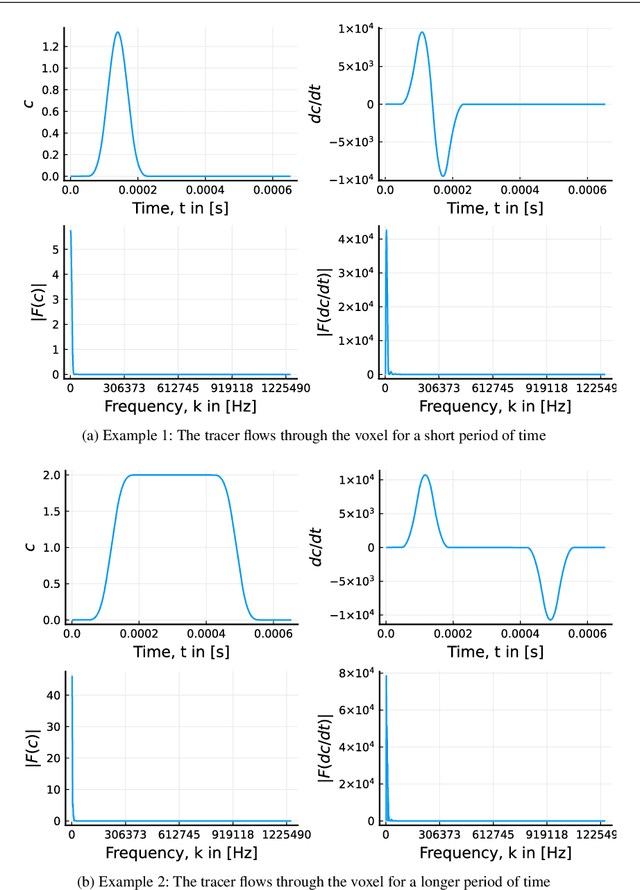Christina Brandt
Field-free Line Magnetic Particle Imaging: Radon-based Artifact Reduction with Motion Models
Jun 19, 2023Abstract:Magnetic particle imaging is a promising medical imaging technique. Applying changing magnetic fields to tracer material injected into the object under investigation results in a change in magnetization. Measurement of related induced voltage signals enables reconstruction of the particle distribution. For the field-free line scanner the scanning geometry is similar to the one in computerized tomography. We make use of these similarities to derive a forward model for dynamic particle concentrations. We validate our theoretical findings for synthetic data. By utilizing information about the object's dynamics in terms of a diffeomorphic motion model, we are able to jointly reconstruct the particle concentration and the corresponding dynamic Radon data without or with reduced motion artifacts. Thereby, we apply total variation regularization for the concentration and an optional sparsity constraint on the Radon data.
Radon-based Image Reconstruction for MPI using a continuously rotating FFL
Nov 22, 2022Abstract:Magnetic particle imaging is a relatively new tracer-based medical imaging technique exploiting the non-linear magnetization response of magnetic nanoparticles to changing magnetic fields. If the data are generated by using a field-free line, the sampling geometry resembles the one in computerized tomography. Indeed, for an ideal field-free line rotating only in between measurements it was shown that the signal equation can be written as a convolution with the Radon transform of the particle concentration. In this work, we regard a continuously rotating field-free line and extend the forward operator accordingly. We obtain a similar result for the relation to the Radon data but with two additive terms resulting from the additional time-dependencies in the forward model. We jointly reconstruct particle concentration and corresponding Radon data by means of total variation regularization yielding promising results for synthetic data.
Modeling Magnetic Particle Imaging for Dynamic Tracer Distributions
Jun 24, 2021



Abstract:Magnetic Particle Imaging (MPI) is a promising tracer-based, functional medical imaging technique which measures the non-linear response of superparamagnetic iron oxide nanoparticles (SPION) to a dynamic magnetic field. For image reconstruction, system matrices from time-consuming calibration scans are used predominantly. Finding modeled forward operators for magnetic particle imaging, which are able to compete with measured matrices in practice, is an ongoing topic of research. The existing models for magnetic particle imaging are by design not suitable for dynamic tracer concentrations. Neither modeled nor measured system matrices account for changes in the concentration during a single scanning cycle. In this paper we present a new MPI forward model for dynamic concentrations. A standard model will be introduced briefly, followed by the changes due to the dynamic behavior of the tracer concentration. Furthermore, the relevance of this new extended model is examined by investigating the influence of the extension and example reconstructions with the new and the standard model.
 Add to Chrome
Add to Chrome Add to Firefox
Add to Firefox Add to Edge
Add to Edge